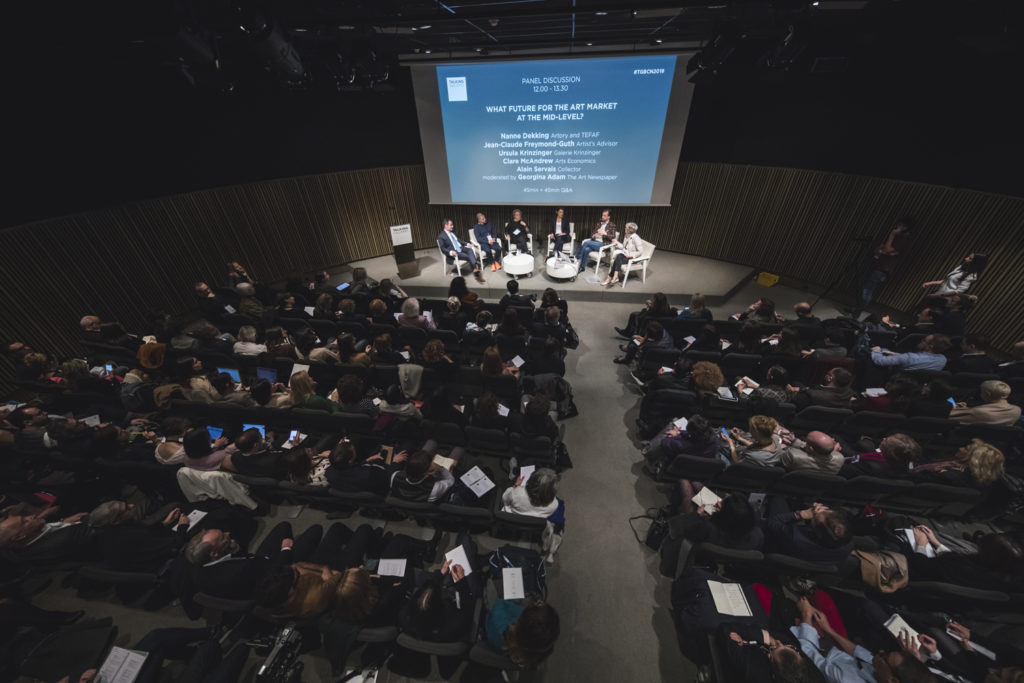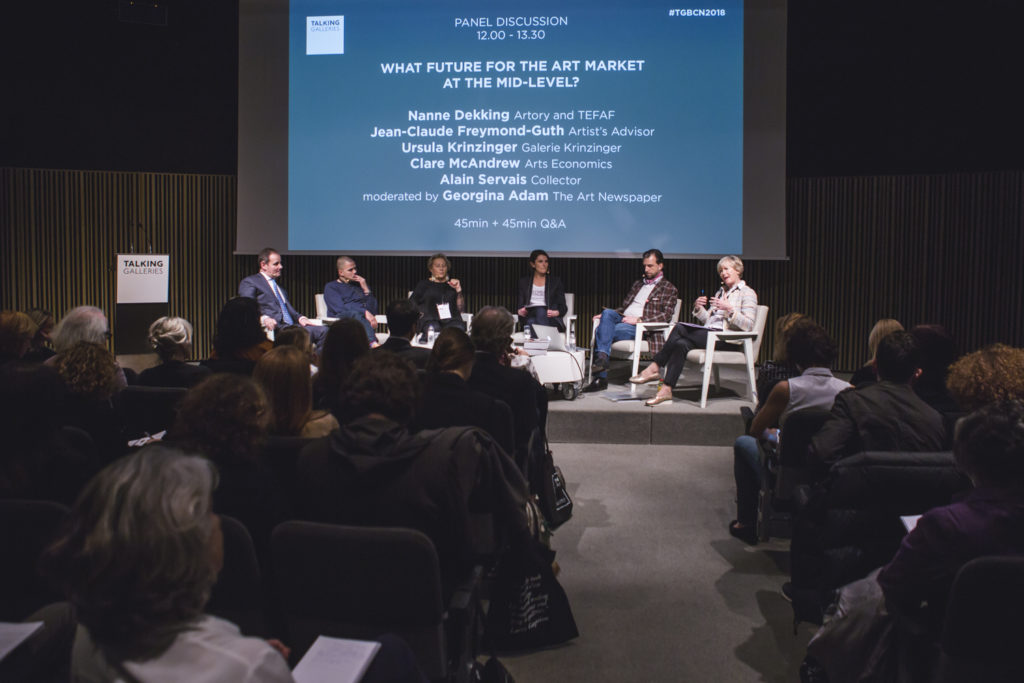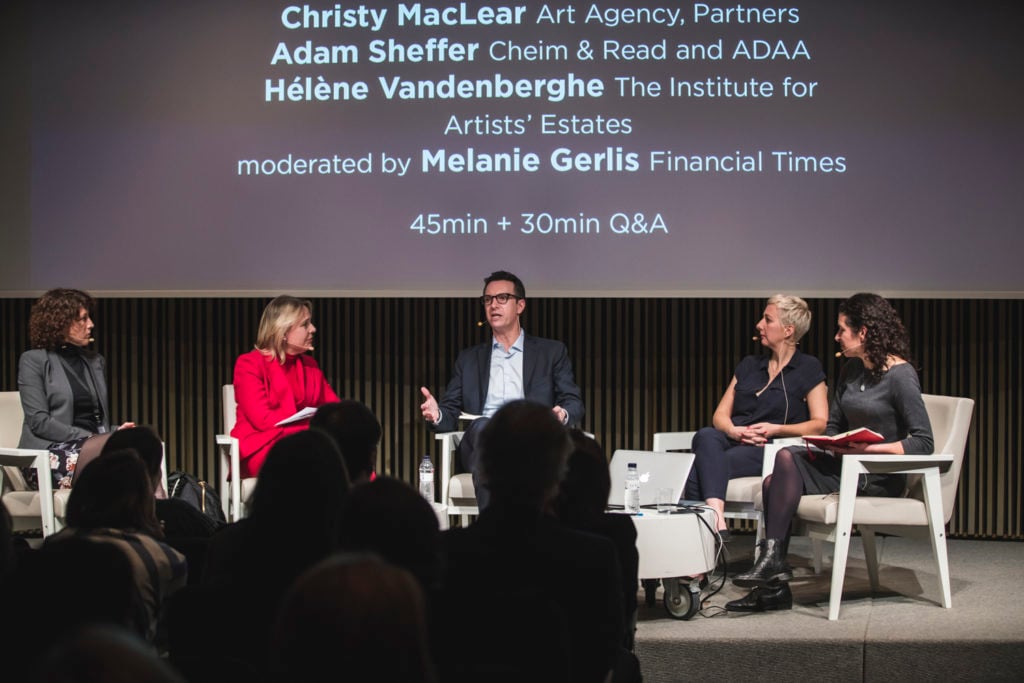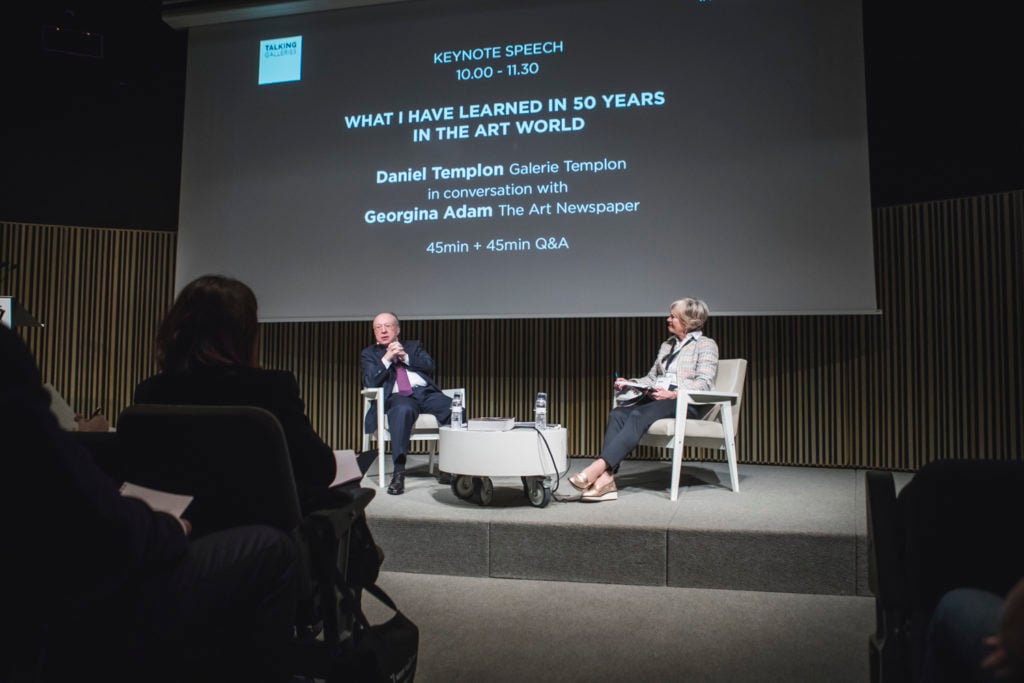Llucià Homs, Founder of Art-Market Think Tank Talking Galleries, on the Most Pressing Questions Facing Dealers Today


Taylor Dafoe

Read any art publication today and you’re bound to come across the phrase “gallery crisis.” It’s an inauspicious term that’s come to connote a number of structural and ideological issues facing the main commercial arm of the art world, from rapid closures and the rise of fairs to the decline of foot traffic and the increasingly stratified gap between big- and small-name galleries. Understanding what exactly is going on requires expertise, and Llucià Homs, the founder of Talking Galleries, is one of those experts.
For the last seven years, Homs has devoted his career to thinking about these issues, and creating an arena in which people can tackle them through collaboration and discourse. Talking Galleries was founded in Barcelona in 2011. It took the form of a symposium wherein leaders from across the international art world would convene for a weekend to talk about the most pressing issues facing the industry, specifically the gallery sector.
That is still the central function of the company, even as it has expanded its footprint to host events in a number of cities across Europe and Asia, drawing increasingly large crowds and pedigreed panelists like Simon de Pury, Elizabeth Dee, and Robert Storr—to name but a few. Though the company has expanded its scope too, launching a publishing component, collaborating with other organizations on ambitious projects, and, most recently, developing an educational initiative. In fact, Homs now considers his company to be less of an event producer and more of a think tank.
Recently, Homs spoke with artnet News about the future of Talking Galleries and what the most pressing issues facing galleries today.

Talking Galleries 2017 Barcelona Symposium. Courtesy of Talking Galleries.
Talking Galleries is seven years old now. What was the impetus for starting the platform, and how—if at all—have your goals changed?
Having worked as a gallerist for over 15 years, I regretted the lack of both specific professional training and a global space for dialogue. Gallerists share so many moments—fairs, openings, gallery associations—but we didn’t have a specific space to discuss our profession. As key agents in the art ecosystem, we had no platform from which we could critically analyze our praxis and address the debates and problems that were affecting us.
At the same time, I became aware that there were no specific educational or training programs devoted to gallery management worldwide. Whereas curating already has its own space in specific educational institutions, and the art market has become a subject in curricula at auction houses like Sotheby’s or Christie’s, the gallery business has not been granted the same attention because traditionally its professionalization has been underestimated.
Those needs led me to found Talking Galleries, which was conceived of as a platform for industry professionals to discuss the key issues facing the gallery sector at a time of economic crisis. The idea came into being as a two-day professional meeting, the 2011 Barcelona Symposium, which brought together nearly 200 participants and built up a much-needed sense of momentum.
Until that moment, no other initiatives in the world had brought together the sector’s professionals in a space that encouraged an open and horizontal exchange of ideas, that articulated the community, and contributed to underlining the important roles that art galleries play.
Today there are plenty of conference programs about the art market—either as part of larger events, such as fairs, or as independent events. At Talking Galleries we specialize in the problems faced by galleries, because we are committed to our mission, which is to help provide services and knowledge to art galleries at a time when the profession is being completely reformulated.
The term “gallery crisis” is thrown around a lot today. It’s used to refer to many ideas: the closing of regional galleries, the mid-market squeeze, the decline of foot traffic, etc. What does that phrase mean to you? What are the biggest and most pressing challenges confronting the gallery sector today?
Over the course of a short period of time, the sector has changed radically, largely as a consequence of the last big financial crisis, globalization, and the emergence of the Internet. One of the most striking aspects of it—which to me is quite worrisome—is the increasing polarization that leads to the biggest galleries gaining strength and extending their international networks while the smaller ones struggle to gain terrain and survive this challenging ecosystem.
Today, one of our challenges is to find a better balance and a more diverse ecosystem. In order to achieve that, I think collaboration between the different levels is indispensable. We are seeing the emergence of many very interesting collaborative projects, and galleries are finding creative ways to cooperate. Still, I think in order to change the current scenario, greater involvement by the big players—the mega-galleries and the big collectors—is key.
On the other hand, I think the true revolution is yet to come, and in my view it has to do with integrating ICTs [information and communication technologies]. Other cultural industries have already embraced this revolution—take a look at the music, publishing, and audio-visual worlds, where new technologies have been fully integrated and the business model has evolved. The art market, however, remains practically the same it was two centuries ago. The digital revolution has not yet reached galleries, and that, too, is one of our main challenges: how to integrate the digital in our understanding and praxis of gallery management.

A panel discussion at Talking Galleries’s 2018 Barcelona Symposium. Courtesy of Talking Galleries.
In what ways is the Talking Galleries model equipped to address this crisis?
Since Talking Galleries first started, the art market has experienced considerable changes. Despite having recovered from the crisis it faced almost a decade ago, many of us think we are at a delicate turning point again. Galleries, auction houses, and art dealers are reassessing their models. Today more than ever, we need to share our ideas, coordinate our strategies, and take advantage of our common strengths.
I believe this project, in its two-fold objective of generating a space for debate and providing education, has tried to support galleries, to enlighten their practices, and to tackle those specific and relevant topics that are challenging for them.
So many galleries and arts non-profits are struggling financially. How has Talking Galleries managed to thrive in this tough environment?
We are a non-profit project financed by public and private funds. Like many other similar entities, we work hard to make our project financially viable. Over these years, building networks and collaborating with other organizations (especially gallery associations like FEAGA in Europe and ADAA in the United States) has been essential. We have also established close collaborations with other professionals, an entire collective that we have come to call “the TG community.” In addition, we organize different kinds of promotional events and programs worldwide, which seek to provide stability to the structure.
Our goal is to offer a non-profit service to the art gallery sector. Talking Galleries stands for knowledge sharing. The video recordings of our past events, as well as our Notebooks with the transcripts, are available online to anyone for free, like an open-source project.

A panel discussion at Talking Galleries’s 2018 Barcelona Symposium. Courtesy of Talking Galleries.
In recent years, a number of high-profile galleries have launched committed editorial outlets, producing everything from books to magazines to podcasts. Why do you think these galleries have embraced this strategy? Should I, as an independent art critic and journalist, fear for my job?
This is a very recent phenomenon and one that we plan on addressing in our next event in Barcelona. Mega-galleries have enormous potential—and not just in financial terms—to generate high-level content that places value on their artists, both through specific publications and through innovative promotional strategies, which new technologies have made possible.
But I also think that, beyond the resources at their disposal, this trend speaks of, and anticipates, a shift in the model or the understanding of a gallery’s business: some of them are becoming artist agencies, much like in the literary sector. Galleries not only represent their artists from a commercial standpoint and manage the sales of their works, they now go on to manage their careers. This new role implies integral management, and it involves handling the production of the work, spreading the artist’s thought, and, ultimately, creating the critical discourse around the work.
I’m curious about Talking Galleries’ own publishing arm. In what ways does the notebook series compliment and expand upon your discussion platform? What is the future of this?
The Talking Galleries Notebooks are produced after each Barcelona Symposium and feature the full transcripts of the contents shared and discussed during the two days. The task of compiling these contents in the form of a publication has to do, on the one hand, with our need to have a permanent record of our meetings and, on the other, with our wish to spread the knowledge and the discussion beyond these professional meetings.
Over time, our goal is for these books to become a reference source for the specific study of gallery management as a practice. Currently, our Notebooks are published in both print and digital form, the latter of which is available on our website for anyone to read.

A panel discussion at Talking Galleries’s 2018 Barcelona Symposium. Courtesy of Talking Galleries.
The company has grown a great deal in its eight years, and now has a footprint in three countries. What is the plan from here?
I myself am surprised to see how Talking Galleries, which started as an annual event in Barcelona, has been growing internationally and achieving a wider resonance. In recent years we have developed a collaborative program with different events in the global art scene—such as fairs, gallery weekends, and art weeks. Both through commissioned projects and by collaborations with local partners, we have designed and organized single sessions or entire programs in different cities around the world, including Berlin, Madrid, New York, Paris, São Paulo, and Seoul.
At present, we are in preparations to stage conferences in Brussels, Dubai, London, and Santiago de Chile during 2019, places where we believe a project like ours can have a significant contribution.
At the same time, following our desire to foster the sector’s professionalization, we are developing an educational initiative through short-format courses specifically designed for future gallerists—it’s our first step towards a future Art Gallery Academy. Our first year will begin in London in the spring of 2019.
That being said, Talking Galleries has not just grown by multiplying the number of events it organizes and their global audience. In a sense, the way we understand the platform and its mission has also evolved and become more nuanced. As a result, we now work and see ourselves not just as an event, but rather as a think tank.
Talking Galleries’s 7th Barcelona Symposium, is set to take place January 21-22, 2019. Get tickets to the event here.